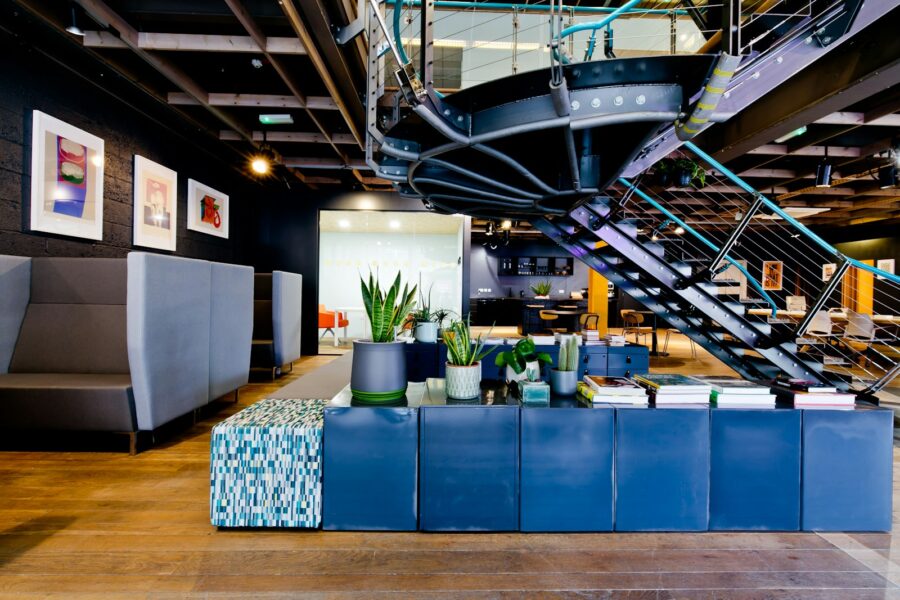It’s been raining, a soft but ongoing rain. The clouds have drifted off now and the peaty smells of the forest floor are wafting up, filling your lungs as you breathe deeply. Sharp rays of sunlight peek through the trees and the intense green of fresh, springtime foliage creates bright dappling on every surface. The bark of the trees is rough, but somehow pleasing to touch.
Is this some sort of meditation thing? Actually, no. But you may be having a similar sense of calm, a release of stress in your shoulders, and a general feeling of wellbeing, having read that.
Sorry to pull you rudely back to your screen and the dull surroundings of an office. Or a waiting room. A station, perhaps.
That brief moment of imagination and awe is gone, but we all know it familiarly, we’ve all lived it and live it when we manage to break away from the hustle of our daily lives. And we’ve all had that resulting sense of wellbeing when we’re in nature, absorbing it through every sense.
We’ve also all lived – or live – the grey walls of a workplace that’s nothing less than uninspiring.
Beauty in buildings
This sense of awe is not always limited to nature. Buildings too can provide wonderment, wellbeing and inspiration. Spanish architect and artist, Antoni Gaudi knew this when, inspired by nature, he designed the organic, quirky buildings that now characterise Barcelona. Though Spain was going through some dark times, he felt that visually joyful buildings would not only uplift the citizens, but that beauty would encourage moral enrichment.
There’s a reason we imagine being in nature if we meditate. Merely being in nature is enough to release endorphins, the feel-good hormones. It increases oxygen to the brain, boosts energy, reduces stress and the perception of pain, anxiety, and stress. This all contributes to feelings of wellbeing, inspiration, mood stability, increased energy and vitality.
Many of us can’t get out into nature very often. Working in an urban city in the dreary confines of a building among buildings, is just not conducive to being out in the fresh air. Well the good news is that even just looking at images of nature can enhance our health and wellbeing.
So why don’t we bring the outdoors in?
It was fashionable to have paintings on walls in offices for a while. But why not make it more immersive? Walls and surfaces are really just a blank canvas and an opportunity to create an environment – live, work, and play – that inspires, promotes wellbeing, creativity, productivity and joy.
A well-thought-out office space can enhance the health and happiness of existing staff, but also contributes to attracting talent. It can help increase productivity and inspire creativity. It’s not necessarily about bringing nature indoors, although that can be helpful, but it is about paying attention to the senses.
As mental health issues continue to rise and working across a dispersed workforce raises new challenges around connectivity and culture, we need to rethink our work environment.
With Covid lockdowns forcing people to work from home, people realised that their own cared-for space can be a far nicer option than their dreary offices.
69% of workers claim their workplace has a direct impact on their mental health. And 25% of workers would consider leaving their job due to a poorly designed workplace. Workplace aesthetics has a direct impact on the wellbeing and happiness of employees.
Awakening the senses
Sensory design is key to boosting wellbeing.
Paying attention to elements like colour schemes, lighting, and focussing on natural elements helps enhance employee comfort. Using natural and sustainable wall surfaces can create a feeling of being outdoors, and deliver the same benefits.
Visible and tactile textures can be brought indoors with textured walls, for example. Natural materials such as wood and moss help to create a calm and soothing environment – great for breakout areas, where people want to feel more relaxed.
During Covid, people were forced to work from home, which many found to be a trying time. However, once we adjusted, we saw the benefits. Recent studies have shown that productivity while working from home is up. On average, those who work from home spend 10 minutes less a day being unproductive, work one more day a week, and are 47% more productive. There would be some obvious reasons, perhaps to do with a commute, etc., but other reasons point to the workplace environment.
Biophilic design
Forming a space that is creative and exciting will help attract and retain top talent.
The office can and should be a vibrant space, more conducive to creative thinking than the home, by the mere fact that there is colleague interaction and feedback. The effervescence that’s stimulated by positive human interaction can undoubtedly not be replicated in an online meeting.
But if employees are in the same space, a space that encourages sparkle and enthusiasm, this ripples into productivity, and ultimately profit.
People expect more from their office space to justify their commute. A decent café helps, no doubt, but productivity and wellbeing is more than just a good cup of coffee (even though this could perhaps be disputed!). Research shows that workplaces focusing on the senses have a greater wellbeing quota. The Journal of Environmental Psychology has produced a report on biophilic office design, a concept used within the building industry to increase occupant connectivity to the natural environment. The report states that:
– Immersive biophilic environments can improve cognitive performance and reduce stress.
– Immersive biophilic environments can increase occupants’ perceived productivity.
– Introducing multisensory biophilic features is recommended in an office setting.
Mental health and wellness are becoming key factors in our current consciousness. And the workplace is under pressure to show care and encourage staff wellness. Creating an environment that is sensitive and considered will provide a space where people want to show up.
In other words, updating your walls with the wow factor is about much more than design. It’s about your people most of all!



